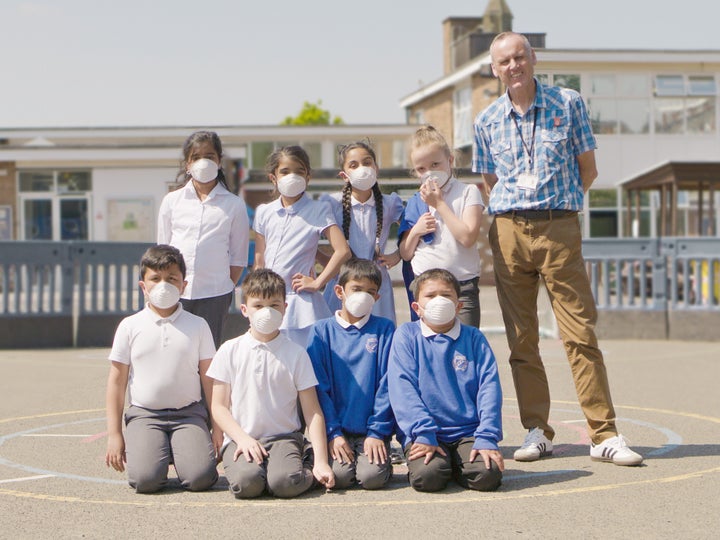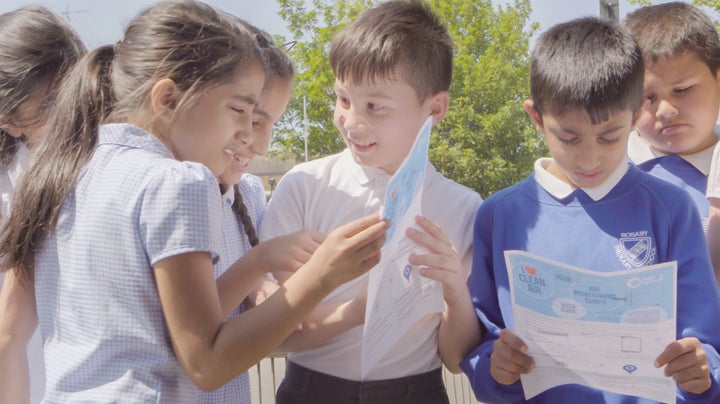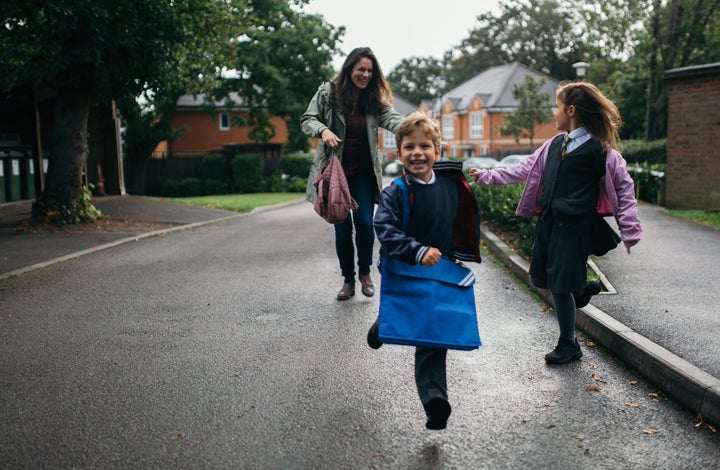Clean Air Day is a chance to find out more about air pollution and to help make our environment cleaner for everyone, so there’s no reason why kids can’t get involved too.
In aid of the day, children at Rosary Catholic Primary School in Birmingham have become activists for clean air after they discovered the pollution at their school was at illegal levels.
With help from Friends of the Earth, the school’s eco group tested the air for Nitrogen Dioxide (NO2) at two different locations around the school. Once they had their results, the pupils sent their data to local MPs and councillors to demand action against air pollution.
“The test results have shown that the air pollution around the school is well in excess of legal limits, and it’s really made us stop and think about the air we breathe,” said Joe Perkins, a teacher at the school.
“It’s been hugely rewarding to teach the pupils all about what affects air quality – we’re seeing the next generation of environmental activists at work!”

Muna Suleiman, clean air campaigner at Friends of the Earth, said they are inviting schools everywhere to join the fight against air pollution this Clean Air Day.
Parents can try this activity with their children at home or around their local area, and order a clean air kit here for a donation. It comes with an air monitoring tube, air pollution guide and instructions to help you get started.

Elsewhere parents are being encouraged to walk or cycle their children to school along quieter routes, as research by Global Action Plan for Clean Air Day found primary school children are exposed to 2.5 times more pollution when walking a busy route to school compared to a quiet route.
For the 50% of children being driven to school, the situation is even worse as the research found they are exposed to double the pollution inside a vehicle compared to those walking on busy streets.
The experiments, conducted across four UK cities (Manchester, Leeds, Glasgow and London), also found that primary school children are exposed to 30% more toxic pollution than adults while walking to school.

Mum Mala Kapoor, from Leeds, said she was shocked to hear how exposed children are to air pollution and will be walking to school with her son today. “Since having my son Ariyan, I have been more concerned about health and wellbeing. When going out I do try to take more back routes [avoiding the most polluted routes]. It might take me a couple of minutes longer but if it reduces Ariyan’s exposure to air pollution, then it’s worth it.”
So how can you get your children involved in the day? We spoke to Clean Air Day to get their advice on what else kids can do to take part:
:: Share and save: If it’s not possible to walk or cycle to school, get kids to ask friends if their parents or carers could organise lift sharing with others to cut down on overall pollution.
:: Find out facts: Do your kids know about air pollution indoors and the easy things they can do to tackle it? Clue: good ventilation such as opening windows when cooking, and using natural cleaning products really helps. Find out more on the website.
:: Pester power: Get kids to tell their teachers that it’s Clean Air Day. Tackling air pollution is not just on one day a year, so teachers can still plan a lesson after the day.
:: Make a pledge: What can kids do beyond Clean Air Day to save air pollution and their health too? Get them to come up with something they will commit to.
:: Do a lichen observation: Lichens (which looks like moss) on trees can be an indicator of air pollutions. This is because air pollutants dissolved in rainwater, especially sulphur dioxide, can damage lichens and prevent them from growing. In places where no lichens are growing, it is often a sign that the air is heavily polluted. Can kids identify any on trees in your school/park? Find out more about other indicators of air pollution here.
